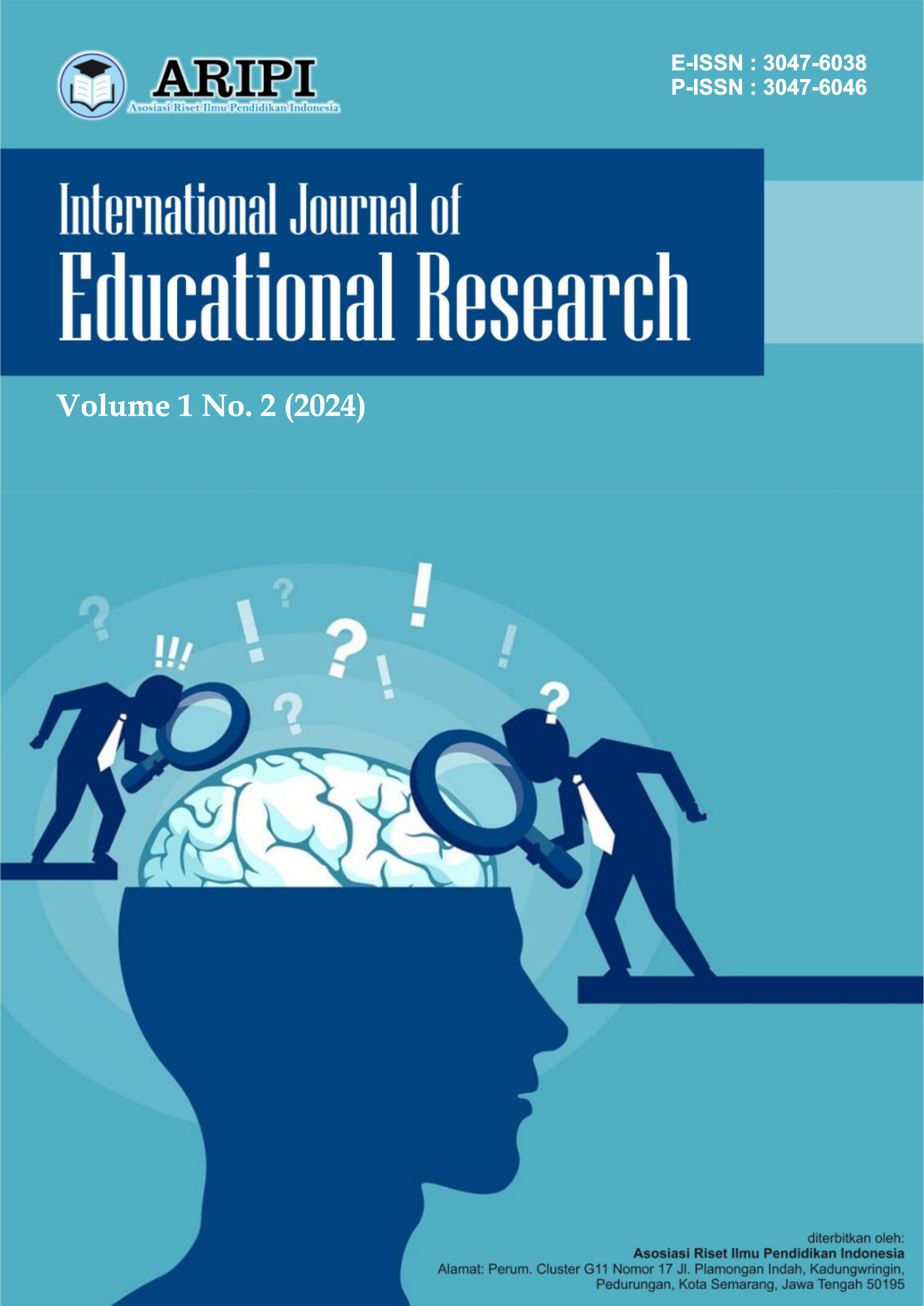Analysis of Kumon Learning at SMA PAB Saentis Kaliserayu Sub-District Road Percut Sei Tuan Desa Saentis
DOI:
https://doi.org/10.62951/ijer.v1i2.24Keywords:
Teaching Methods, Kumon Learning, PAB 8 SaentisAbstract
The learning that has been carried out so far in the school tends to apply classical learning techniques that do not pay attention to the stages in the variety of learning. For this reason, a good way is needed to learn a lesson, one of which is known as a learning technique. In this research activity, the theme of mathematics learning for school children is based on the KUMON method. This technique is considered one of the solutions that is expected to increase children's academic values and awareness in learning and train children to have independence and full responsibility in the learning process. Indirectly, when repeating the material done by the child, the child will get a reinforcement value that is more than the material conveyed Repetition is intended to provide added value in learning a new material and is implicit in the hierarchical structure of the material that has been learned so that it will be self-absorbed when the child is faced with a problem that establishes a relationship to relates the past material to the future material. the regression analysis test using simple linear regression analysis with the general form of the equation formed is as follows: Y = 0.099X + 36.823. Where the learning variable affects the bound variable of learning outcomes of 0.099 and the value of the constant when no one variable influences, it will produce a learning outcome value of 36, 823. hypothesis test proved to be accepted and the null hypothesis was rejected from the results of the calculation of the value of t obtained was t calculated 6.796 greater than t tabel = 0.697 and sig = 0.763 > sig 0.05, it can be proven that the learning variable has a positive and significant effect on the learning outcome variable.
References
Ahmadi, A. (1997). Teaching and learning strategies. Bandung: Pustaka Setia.
Ahmadi, L. K. S., & Amri, S. (2011). KTSP-oriented learning strategy. Jakarta: Pustaka Karya.
Aqib, Z. (2013). Contextual learning models, media, and strategies (innovative).
Bugin, B. (2007). Qualitative research methods. Jakarta: Raja Grafindo Persada.
Daradjat. (2006). Laws and regulations of the Government of the Republic of Indonesia on education. Directorate General of Islamic Education, Ministry of Religion of the Republic of Indonesia.
Directorate of Education Personnel. (2008). Learning strategies and their selection. Jakarta: Dipdiknas.
Djamarah, S. B. (2010). Teaching and learning strategies. Jakarta: Rineka Cipta.
Djamarah, S. B., & Zain, A. (2006). Teaching and learning strategies. Jakarta: Rineka Cipta.
Ministry of National Education. (2001). Great dictionary of the Indonesian language. Jakarta: Balai Pustaka.
Zakiah. (1995). Special methods of Islamic religious lessons. Jakarta: Bumi Aksara.
Downloads
Published
How to Cite
Issue
Section
License
Copyright (c) 2024 International Journal of Educational Research

This work is licensed under a Creative Commons Attribution-ShareAlike 4.0 International License.




